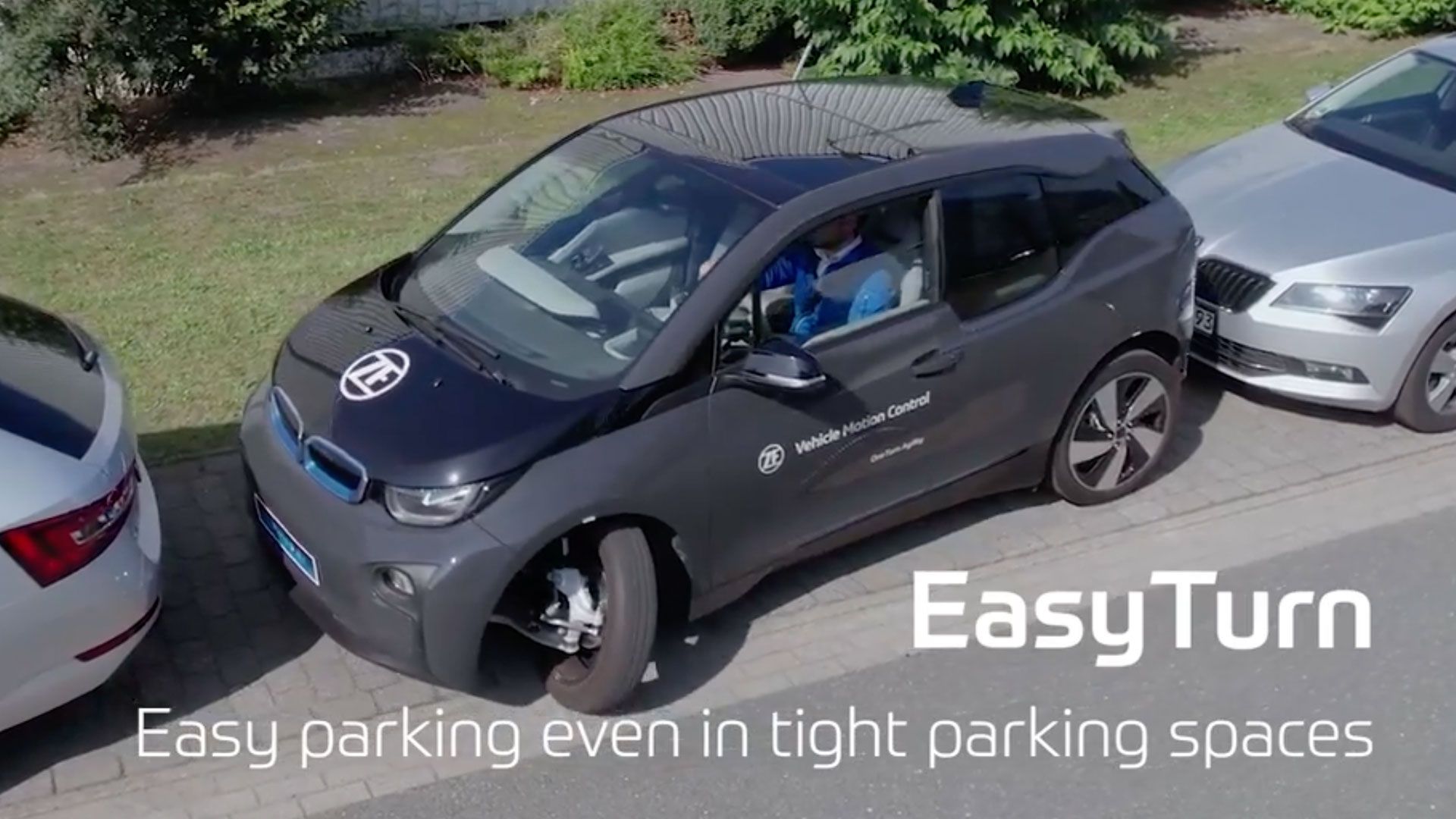

When I was a little kid, I wondered why car companies didn’t make their front wheels twist a full 90 degrees, which would make them turn better. It seemed simple: Make the wheels turn more, so the car turns more. Duh? Why didn’t any car companies make me, a 10-year-old, lead engineer? My brain didn’t understand the myriad packaging issues a front suspension system creates. More than two decades later, ZF may have a way to make my idea work on most cars with its new suspension setup.
Spotted by Motor Trend, ZF’s EasyTurn technology is a new front suspension design that turns the front wheels up to 80 degrees, a big upgrade from the usual 35-ish degrees. In a standard suspension, the steering rack connects to the steering knuckle directly, but ZF’s EasyTurn suspension adds two additional links between the tie-rod and the knuckle. From the steering rack, the tie-rod connects to a link that’s perpendicular to the tie-rod. That secondary link then connects to another, much smaller tie-rod, which runs parallel with the one and connects to the wheel knuckle. So instead of a direct, solid connection between the steering rack and the wheel, this system creates a Z-shaped connection with two joints, allowing for far greater wheel articulation.

In some of the demonstration videos from ZF, you can see how much easier it is for the EasyTurn-equipped i3 to parallel park and even make single-move U-turns in the middle of a road. It can even turn around in almost a perfect circle while stationary, which would allow a driver to turn out of street parking, 180 degrees into the opposite direction of traffic, in one smooth motion. In a cramped city, that sort of turning radius would be invaluable.
This technology won’t fit in all cars, though. That extra wheel articulation and added steering components create packaging issues for most front-engine vehicles. However, it does seem to work very well on rear-engine, rear-wheel drive cars, such as a Porsche 911. For ZF’s demonstration, it fitted EasyTurn to a BMW i3, which uses a rear-mounted electric motor to power the rear wheels, leaving the front empty enough to fit the added components and greater wheel articulation. Electric cars will likely benefit most from this tech, as even all-wheel-drive EVs have better front packaging than a front-engine car.

There was no mention of any modifications to the steering rack, but it would likely have to be a variable ratio to accommodate that sort of wheel articulation while maintaining a reasonable amount of turns, lock-to-lock, on the steering wheel. Something similarly extreme to Lexus’ variable steering ratio for its yoke steering wheel would likely do the trick. ZF hasn’t said if it’s currently working with any automakers to put EasyTurn into any production cars, nor how much the technology could cost. But it does seem like a tech that many automakers would want, especially once their lineups become more electrified.
Got a tip? Send it in to tips@thedrive.com